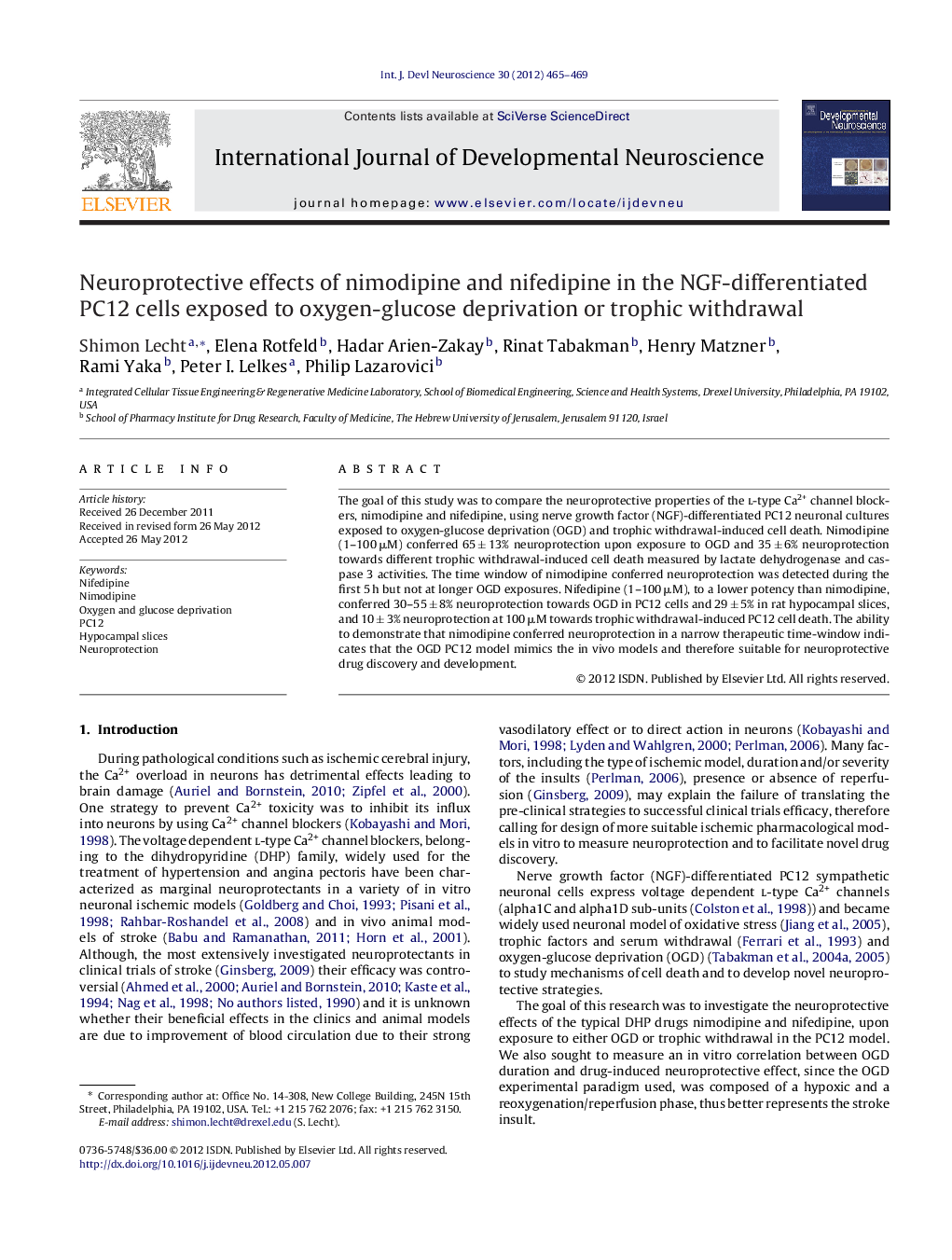| کد مقاله | کد نشریه | سال انتشار | مقاله انگلیسی | نسخه تمام متن |
|---|---|---|---|---|
| 2786216 | 1568410 | 2012 | 5 صفحه PDF | دانلود رایگان |

The goal of this study was to compare the neuroprotective properties of the l-type Ca2+ channel blockers, nimodipine and nifedipine, using nerve growth factor (NGF)-differentiated PC12 neuronal cultures exposed to oxygen-glucose deprivation (OGD) and trophic withdrawal-induced cell death. Nimodipine (1–100 μM) conferred 65 ± 13% neuroprotection upon exposure to OGD and 35 ± 6% neuroprotection towards different trophic withdrawal-induced cell death measured by lactate dehydrogenase and caspase 3 activities. The time window of nimodipine conferred neuroprotection was detected during the first 5 h but not at longer OGD exposures. Nifedipine (1–100 μM), to a lower potency than nimodipine, conferred 30–55 ± 8% neuroprotection towards OGD in PC12 cells and 29 ± 5% in rat hypocampal slices, and 10 ± 3% neuroprotection at 100 μM towards trophic withdrawal-induced PC12 cell death. The ability to demonstrate that nimodipine conferred neuroprotection in a narrow therapeutic time-window indicates that the OGD PC12 model mimics the in vivo models and therefore suitable for neuroprotective drug discovery and development.
► We studied Ca2+ channel blockers-mediated neuroprotection using in vitro PC12 model.
► Nimodipine/nifedipine induced neuroprotection against OGD and trophic withdrawal.
► Time window of nimodipine-induced neuroprotection was during first 5 h of OGD.
► Nifedipine conferred neuroprotection towards OGD insult in rat hypocampal slices.
► OGD PC12 model mimics in vivo results, thus useful for neuroprotective drug discovery.
Journal: International Journal of Developmental Neuroscience - Volume 30, Issue 6, October 2012, Pages 465–469